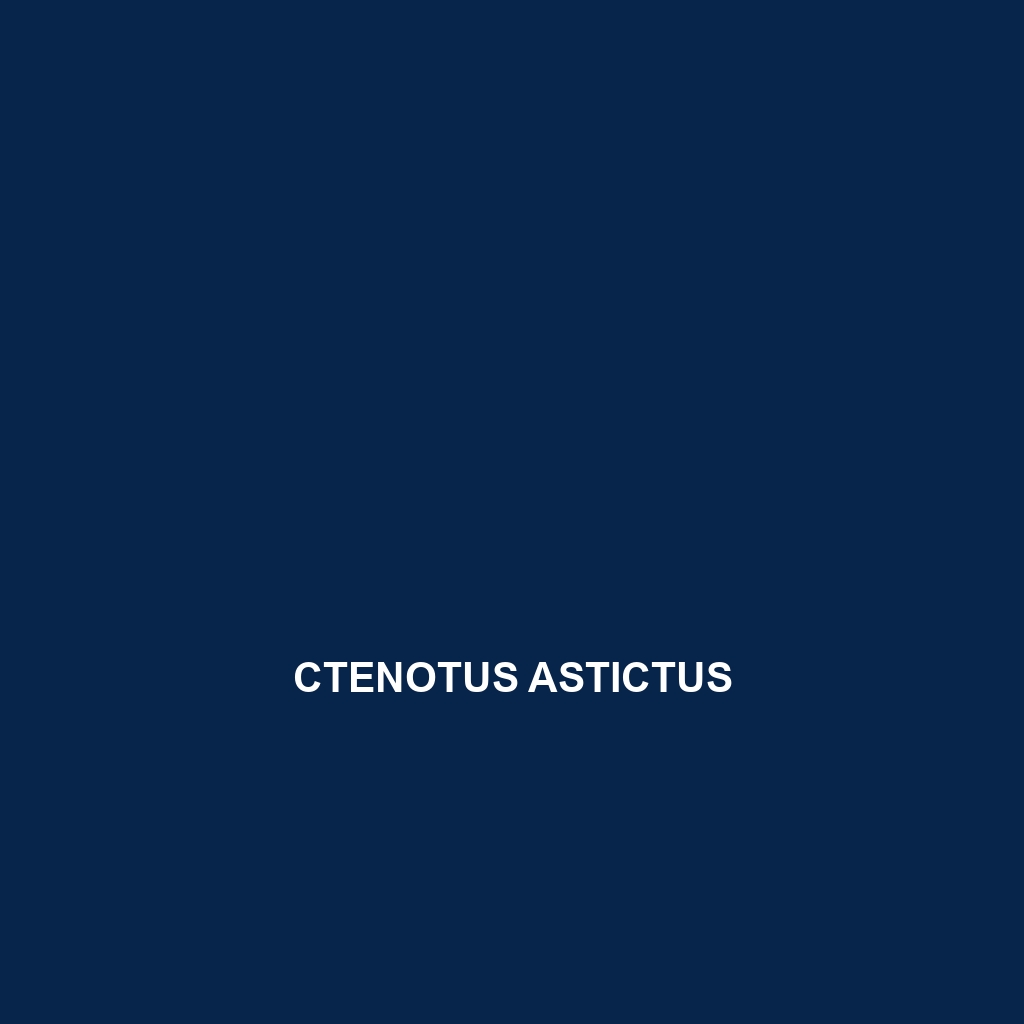Discover the Ctenotus gemmula, a slender skink native to Australia's arid regions, boasting distinctive earthy coloration and agile movements. This diurnal reptile thrives in sandy habitats, primarily feeds on insects, and plays a crucial role in its ecosystem by maintaining insect population balance.
Tag: Australian skink
Ctenotus euclae
Discover the Eucla Ctenotus (Ctenotus euclae), a medium-sized skink native to southwestern Australia, known for its effective camouflage, diurnal behavior, and diet of insects and small invertebrates. With a slender body averaging 10 to 15 cm in length, this resilient species plays a crucial role in its ecosystem by controlling pest populations.
Ctenotus decaneurus
Ctenotus decaneurus, a medium-sized skink native to arid regions of inland Australia, is distinguished by its elongated body, smooth scales, and light brown to dark tan coloration with stripes. Active during the day, this insectivorous species plays a crucial role in its ecosystem by regulating insect populations and serves as a prey source for larger predators.
Ctenotus brachyonyx
Ctenotus brachyonyx, commonly known as the short-tailed skink, is a medium-sized Australian lizard that thrives in semi-arid scrublands and grasslands, exhibiting distinctive brown or gray coloration and a short, rounded tail. This active, diurnal species primarily feeds on small invertebrates and plays a crucial role in its ecosystem by controlling pest populations.
Ctenotus astictus
Discover the Ctenotus astictus, a small Australian skink renowned for its distinctive brown, gray, and cream patterned body, reaching lengths of 8 to 12 centimeters. This agile, diurnal species thrives in arid woodlands, preying primarily on insects while playing a crucial role in its ecosystem as both predator and prey.
Carlia schmeltzii
<p>The <i>Carlia schmeltzii</i>, or Schmeltz's Carlia skink, is a slender, diurnal skink measuring 10 to 15 cm, found in Queensland and New South Wales. Known for its vibrant lateral stripes and agile movements, it inhabits moist forested areas and feeds primarily on insects and small invertebrates.</p>
Carlia rostralis
Explore the <i>Carlia rostralis</i>, a small skink native to Australia and New Guinea, known for its striking color pattern, active daytime behavior, and diet primarily consisting of small invertebrates. This agile species plays a vital role in its ecosystem by controlling insect populations and serving as prey for larger predators.
Carlia munda
The Carlia munda, also known as the common skink, is a medium-sized skink native to eastern Australia, characterized by its elongated body, smooth scales, and striking coloration. This insectivorous species thrives in diverse habitats, including forests and woodlands, and plays a vital role in its ecosystem as both a predator and prey.
Carlia insularis
Carlia insularis (scientific name: Gehyra insularis) is a small to medium-sized skink, averaging 10 to 15 cm in length, found in the coastal forests and shrublands of eastern Australia. This diurnal insectivorous species is known for its vibrant coloration, territorial behaviors, and remarkable adaptability, playing a crucial role in maintaining ecological balance.
Carlia amax
Discover the <strong>Carlia amax</strong>, known as the <strong>Australian skink</strong>, a slender, agile lizard thriving in northern Australia's tropical habitats. This ovoviviparous insectivore, measuring 10-15 cm, exhibits vibrant color patterns and plays a crucial role in controlling insect populations.









